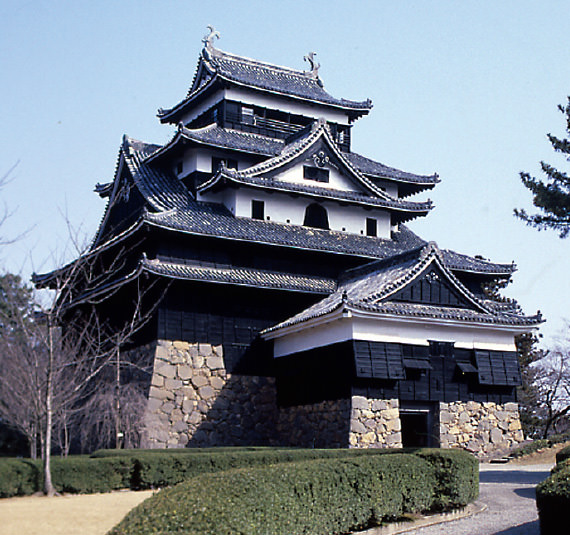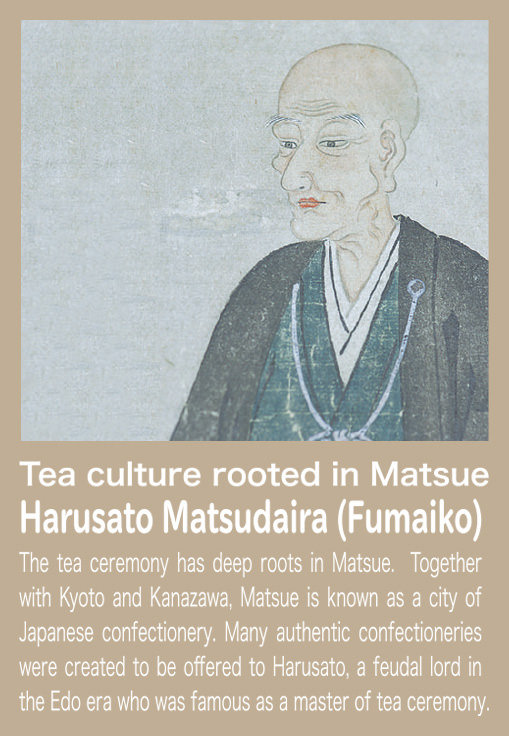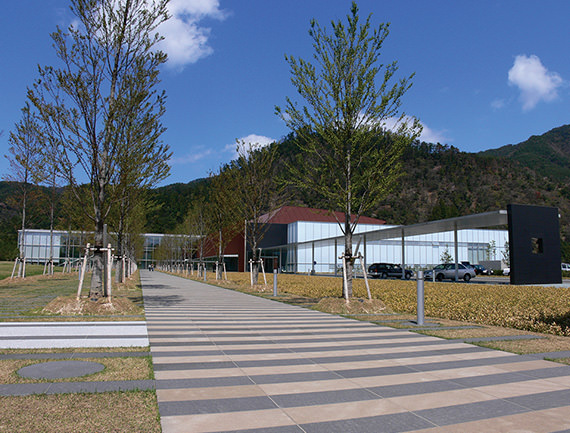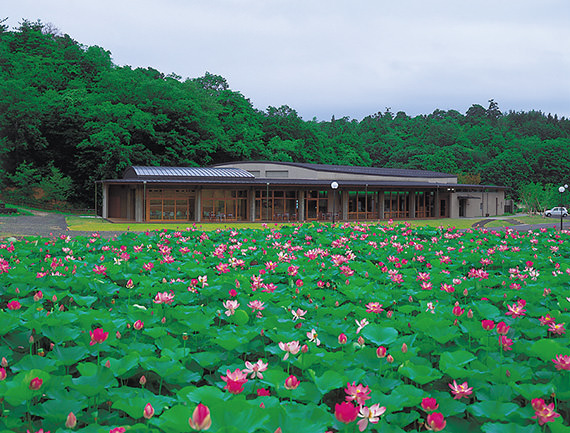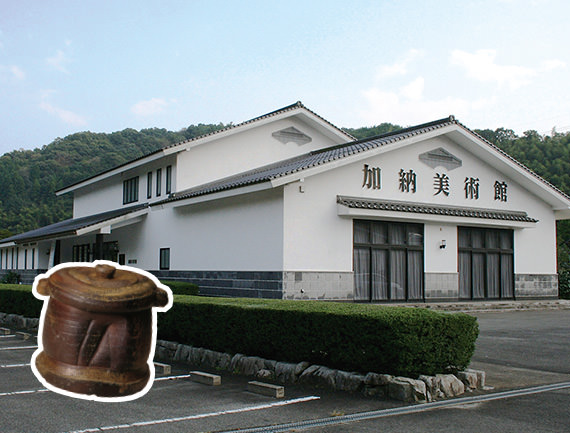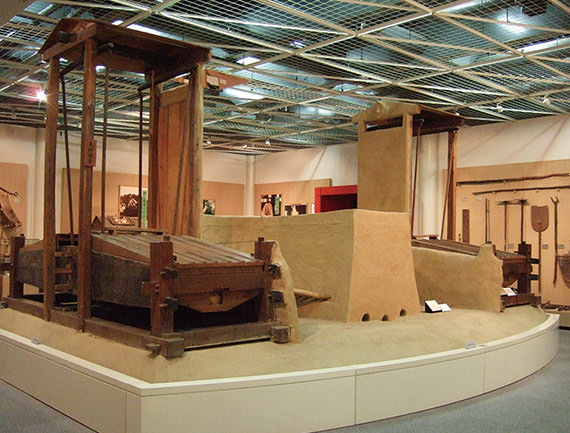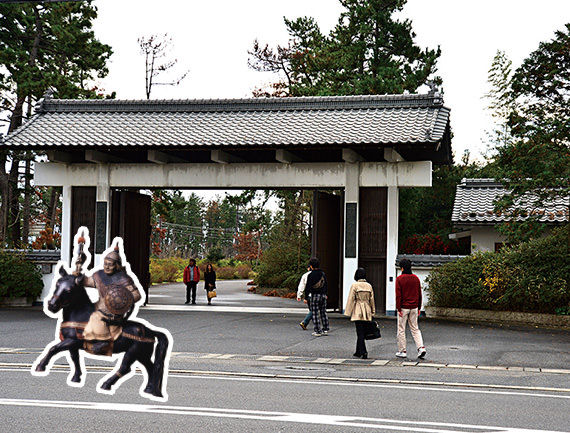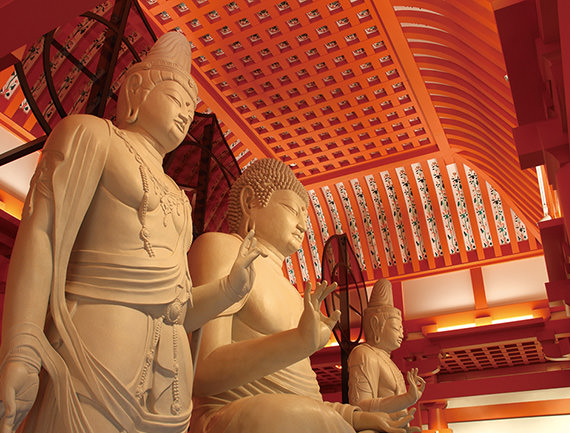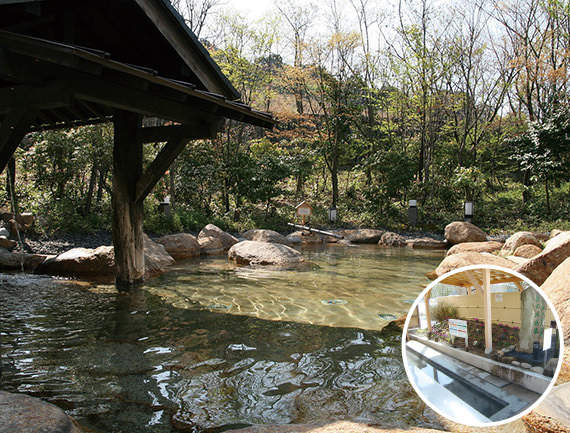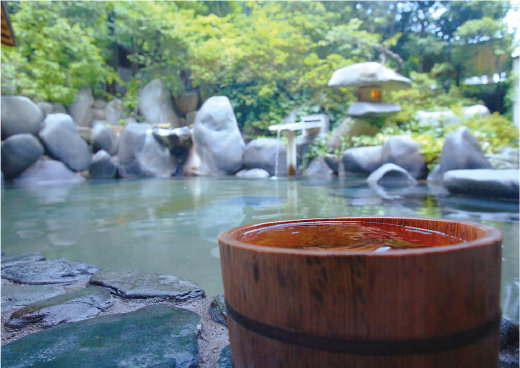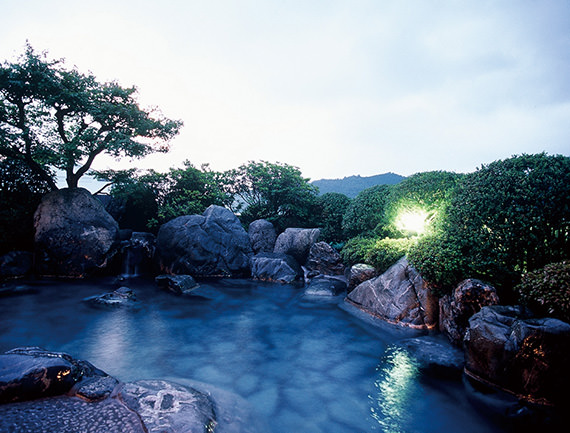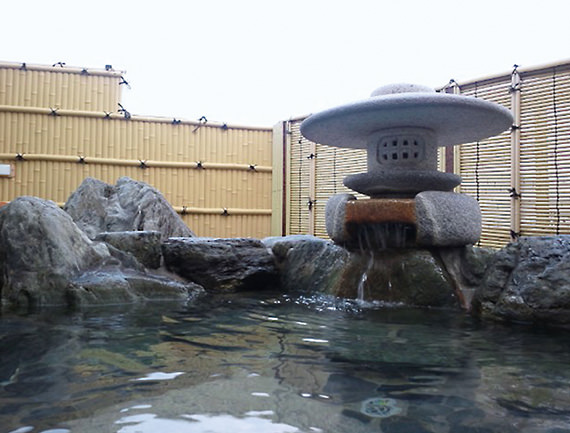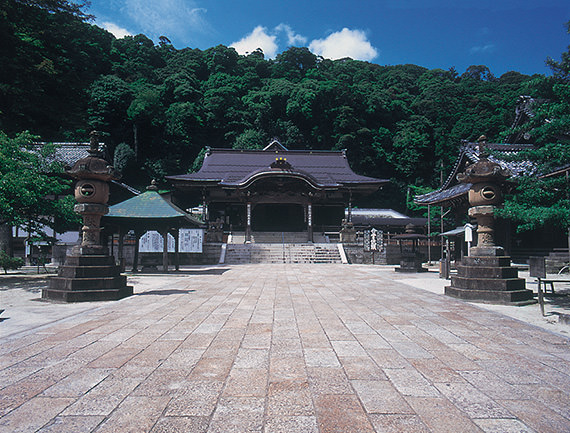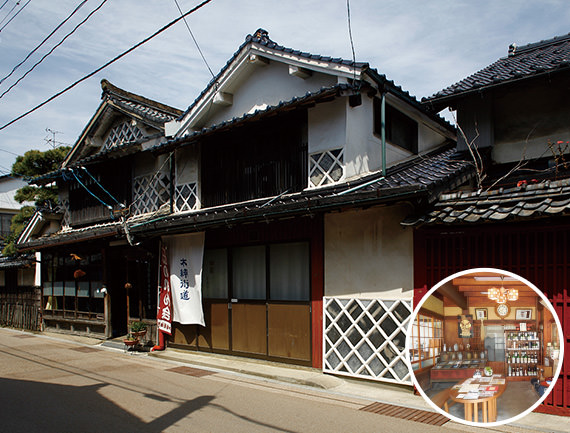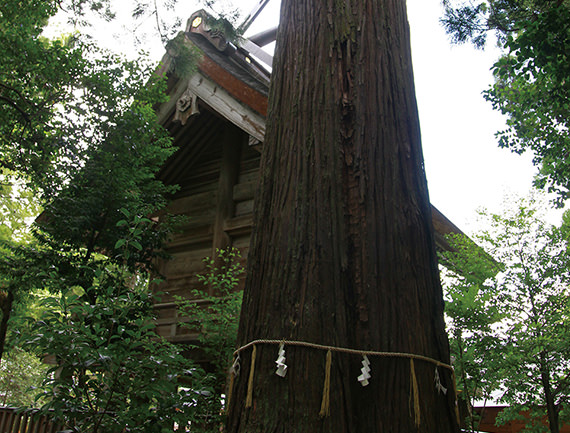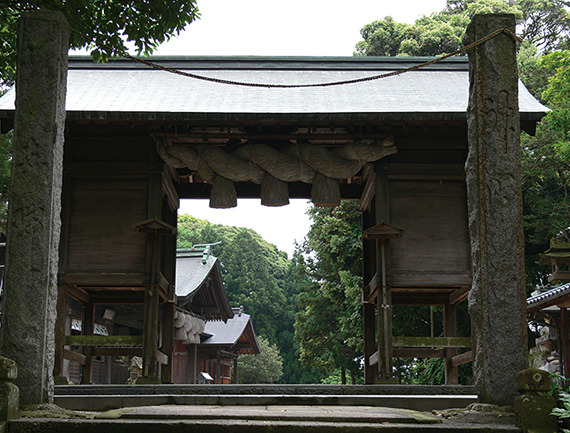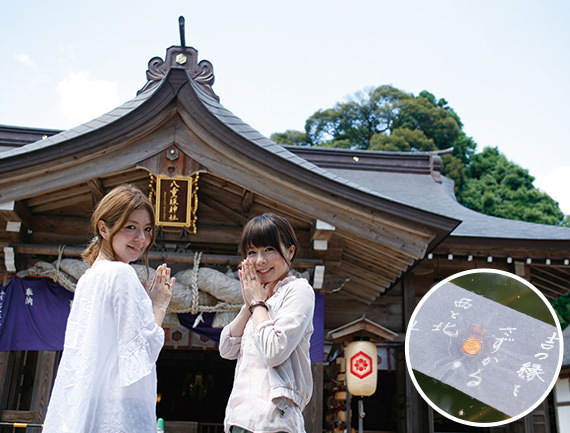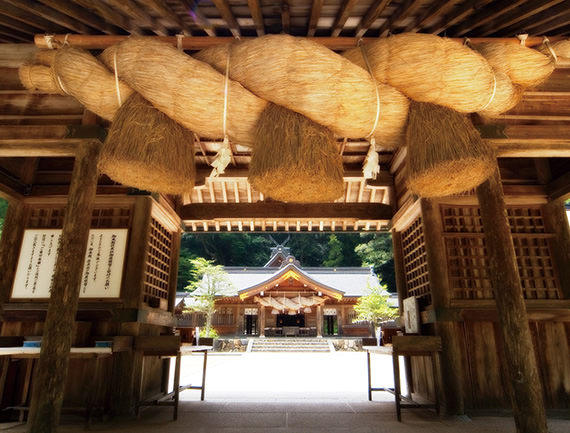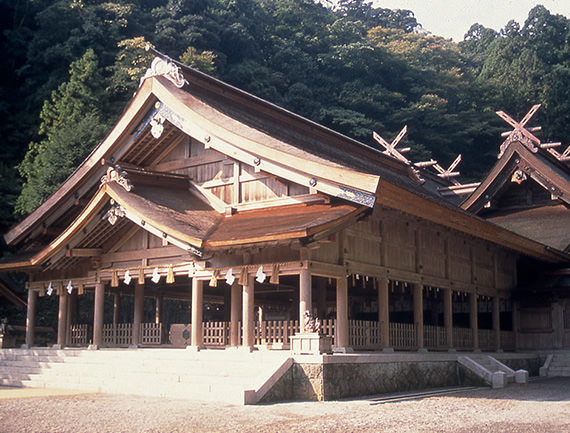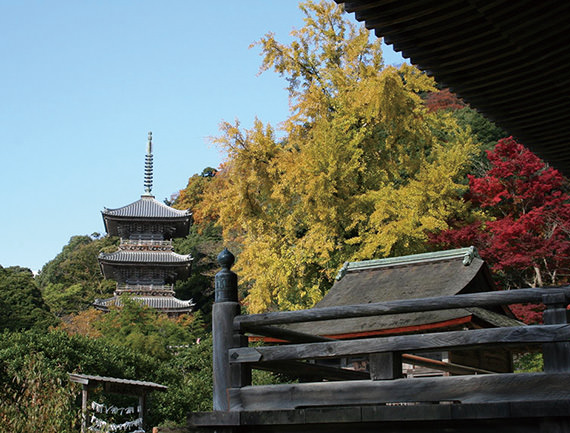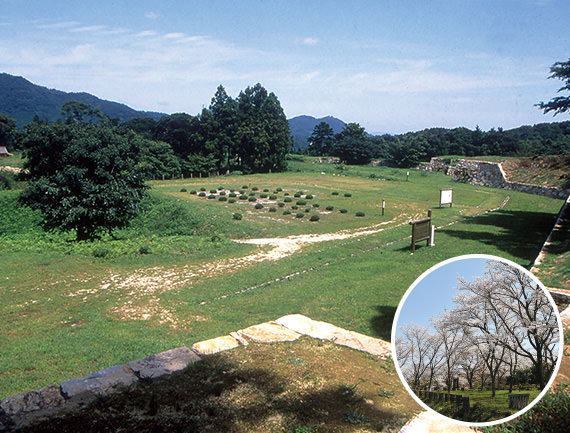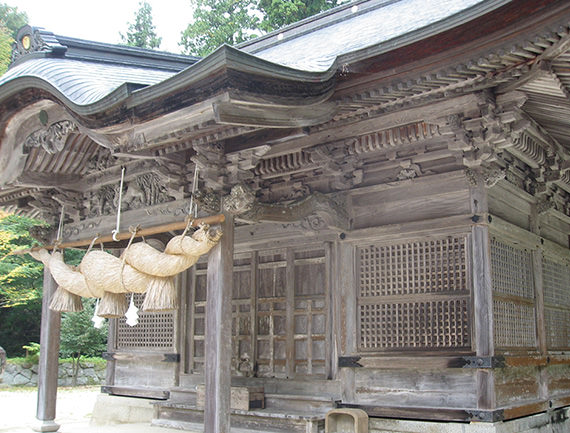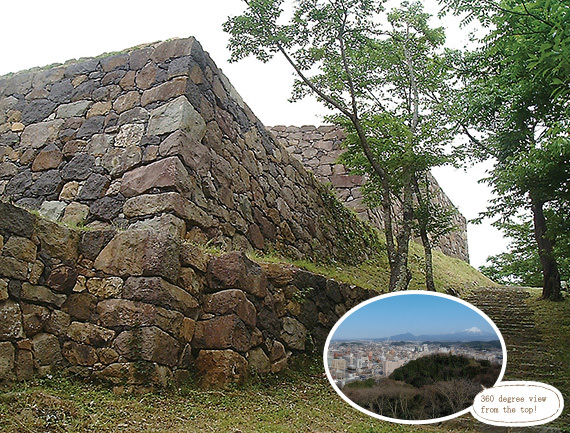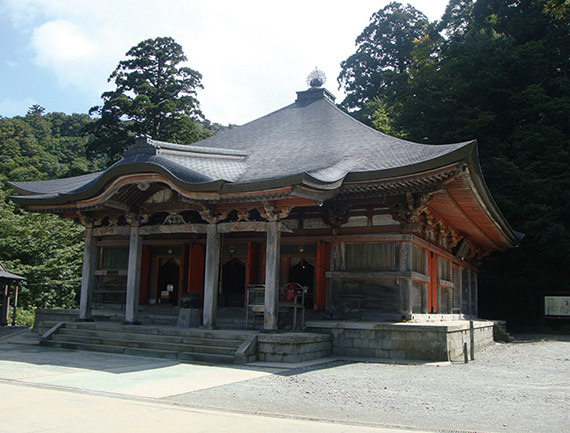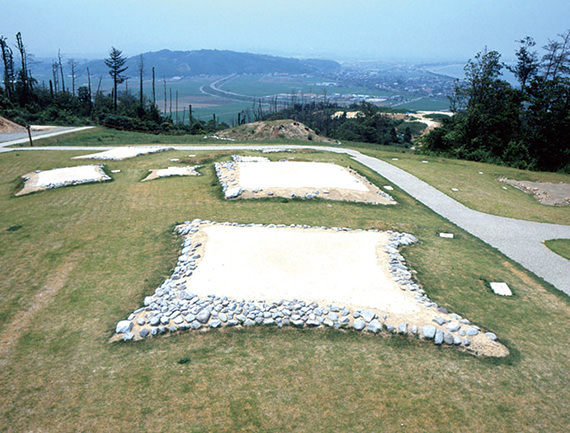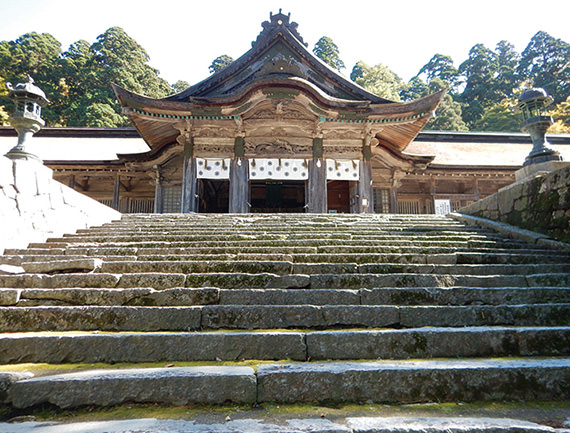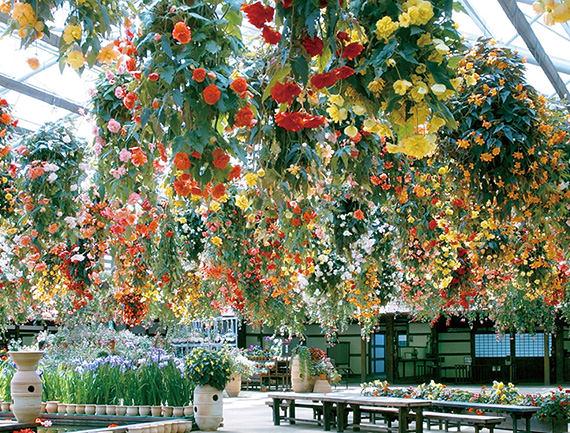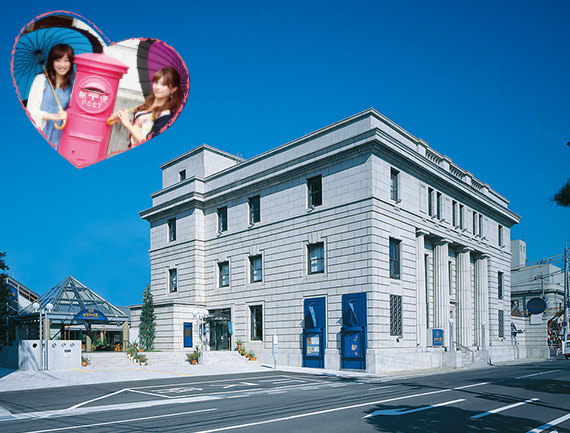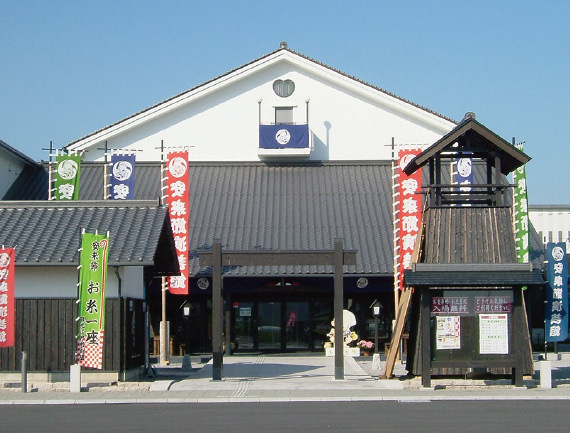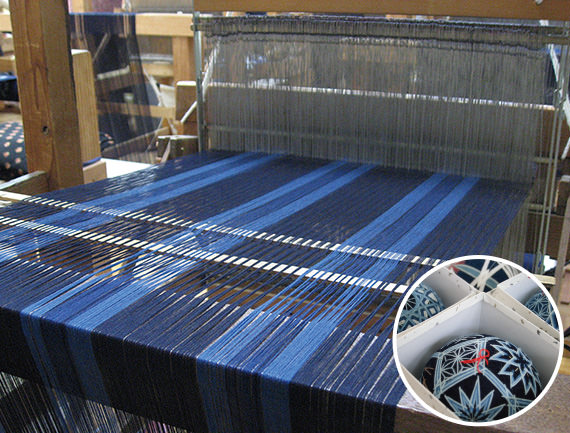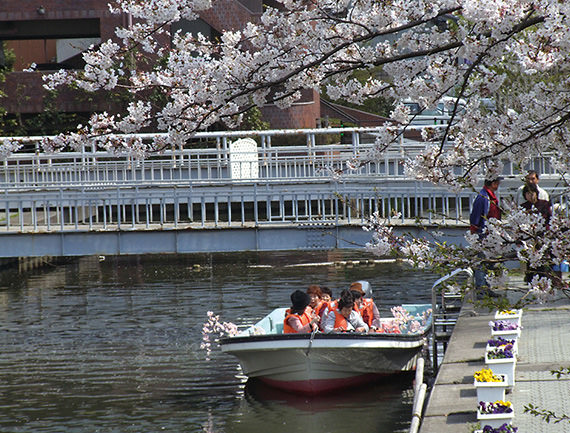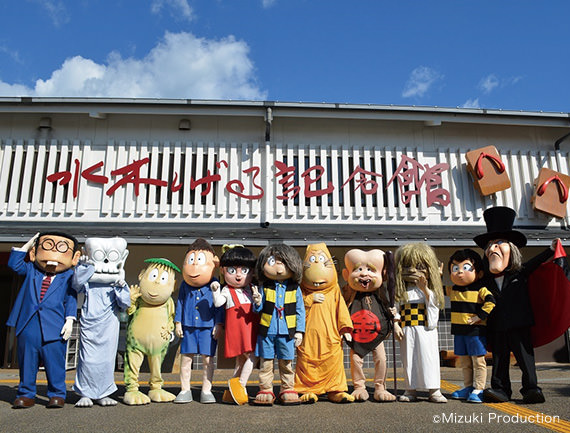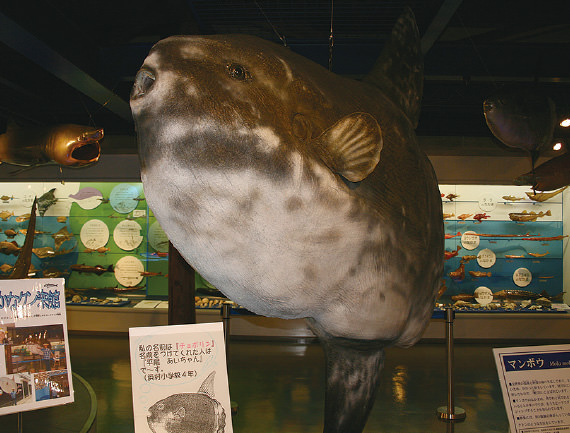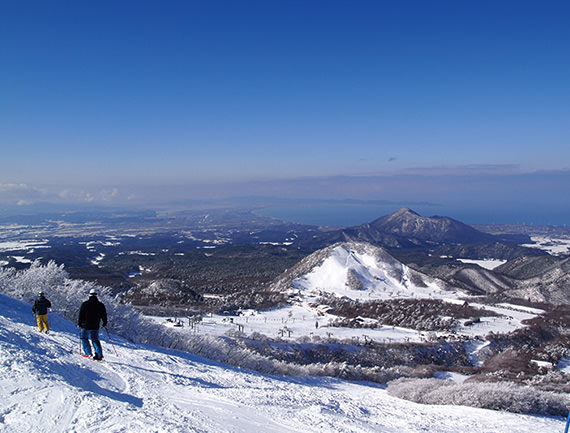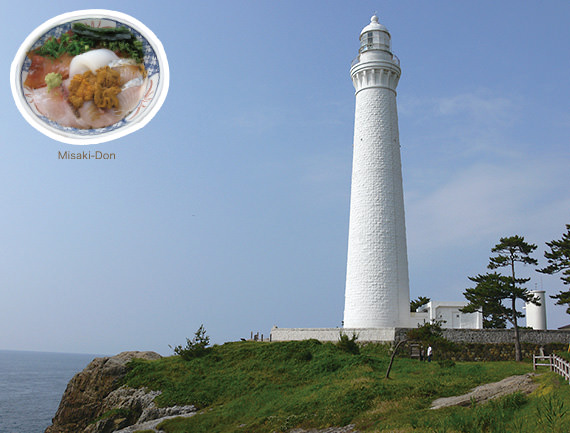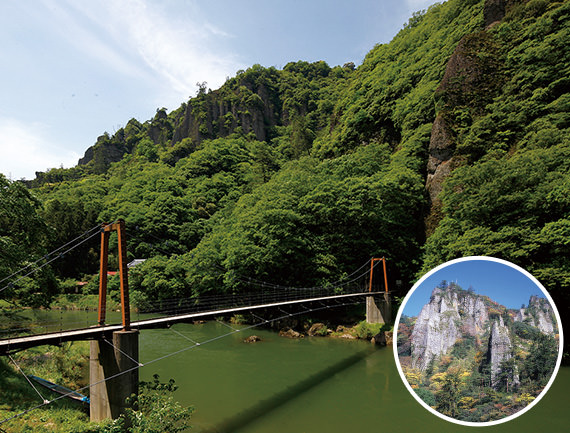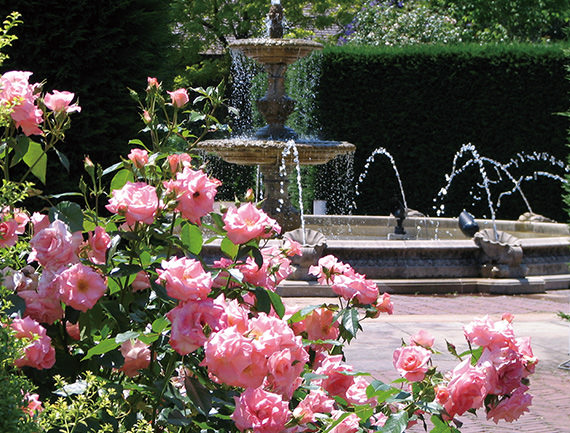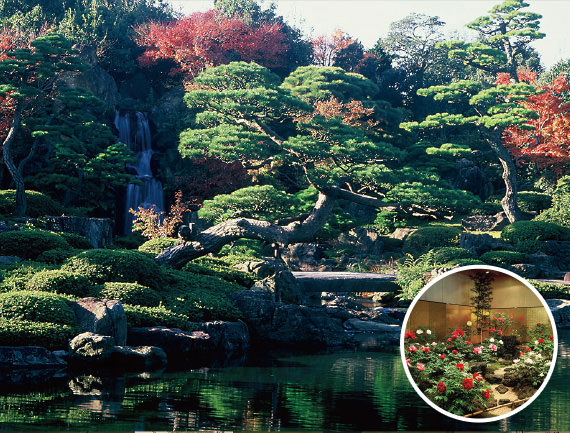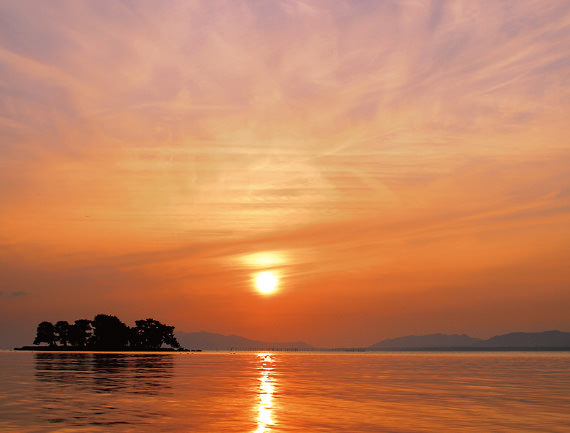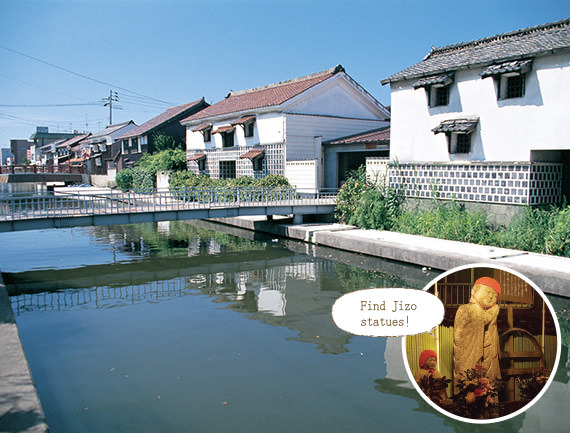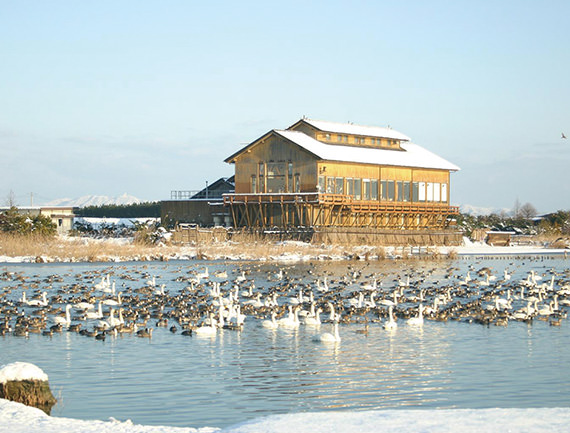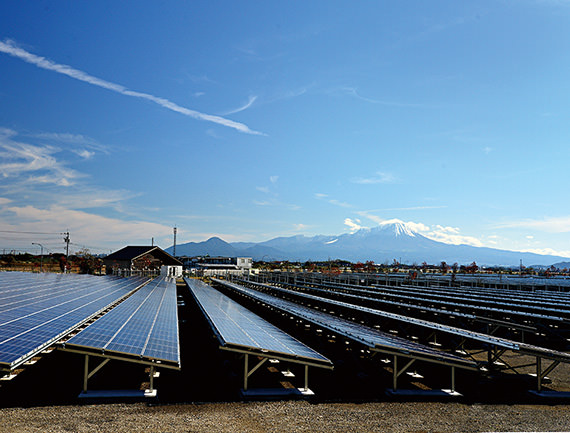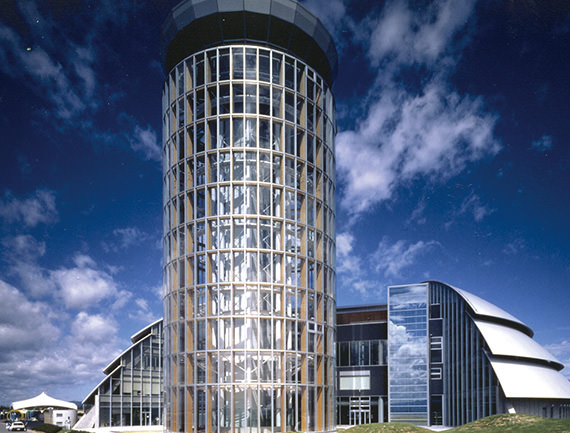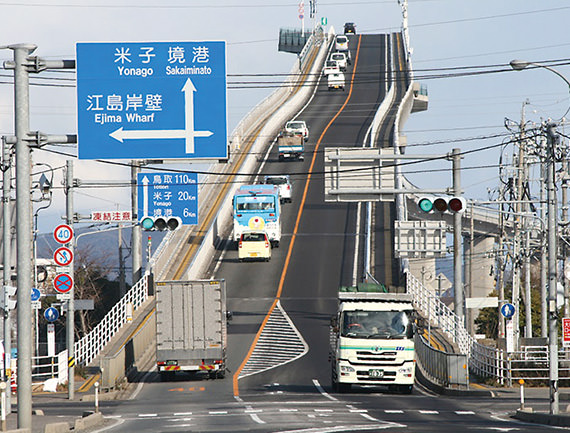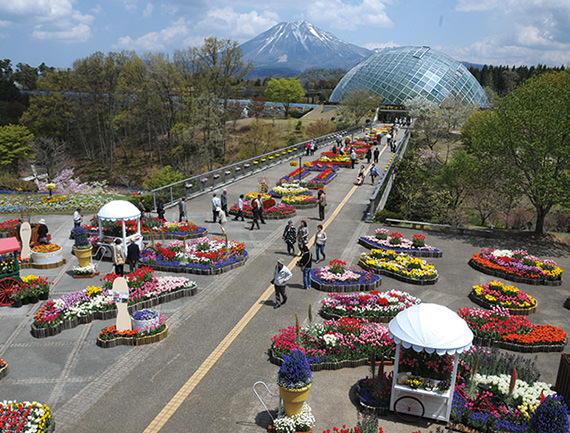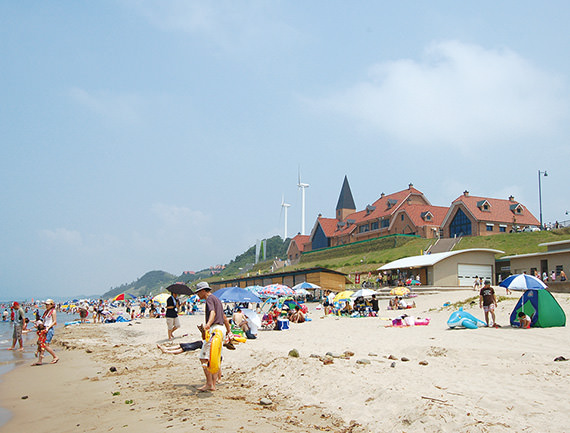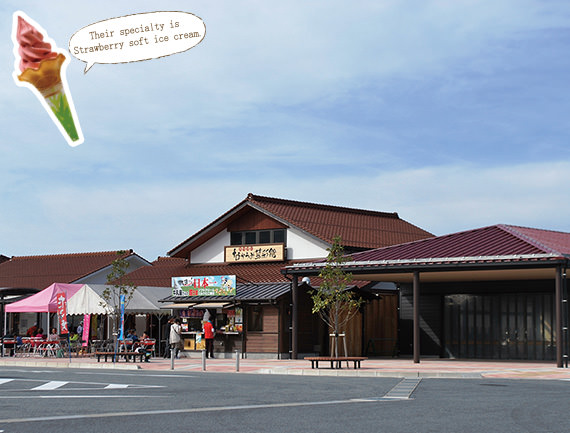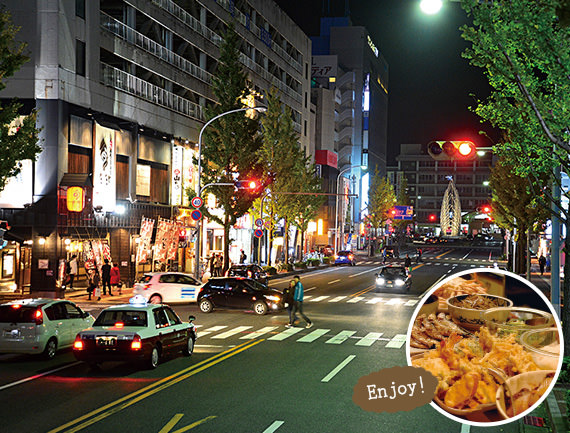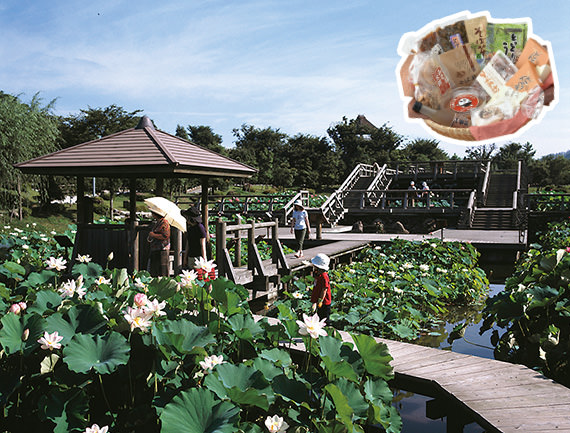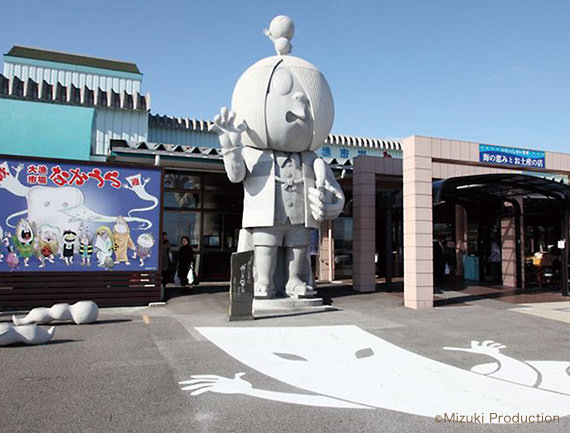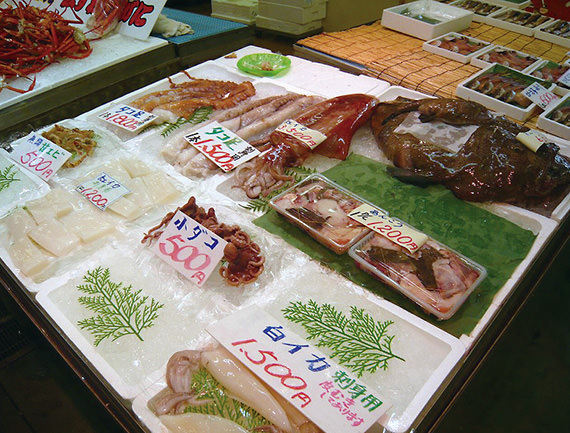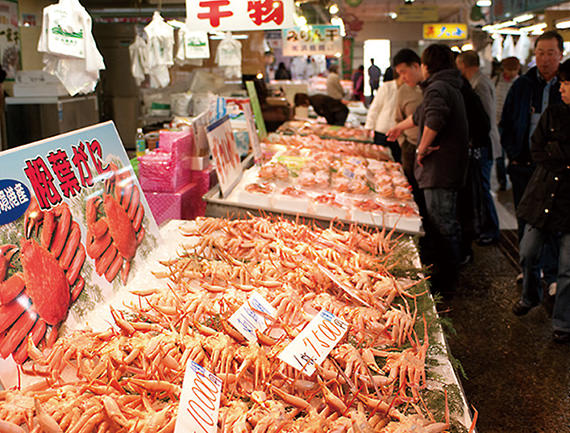A TRIP TO THE HEART OF
THE SAN'IN REGION
SPOTS
Enshrines Okuninushi of Izumo mythologies 01Izumo Oyashiro
One of the oldest shrines in Japan that enshrines Okuninushi and a popular spiritual spot of successful relationships. According to "The Kojiki" and "The Nihon Shoki", Izumo Oyashiro was originally built as a great palace at the time of "transfer of the land of Okuninushi". The current main shrine was built in 1744 at a height of 24 meters. The shrine was designated as a national treasure in 1952. Building renovations (Sengu) take place every 60 years and the latest renovation just finished recently.
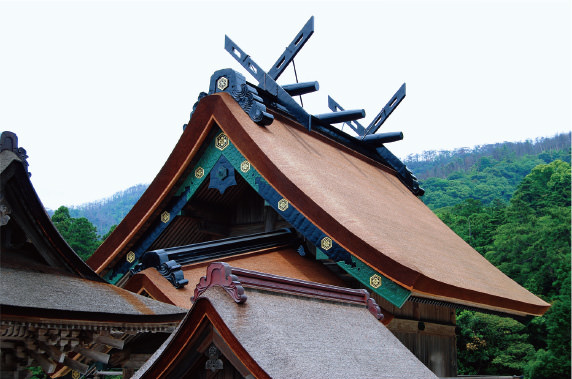
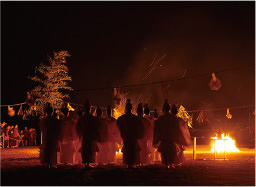 Welcoming gods ritual
Welcoming gods ritual
The ritual to welcome gods from around Japan on the night of October tenth.
◆How to worship at Izumo Oyashiro◆
Praying at shrines
At most shrines, you should bow twice, clap twice, and bow a final time. At Izumo Oyashiro, the proper way is to bow twice, clap four times, and bow a final time.
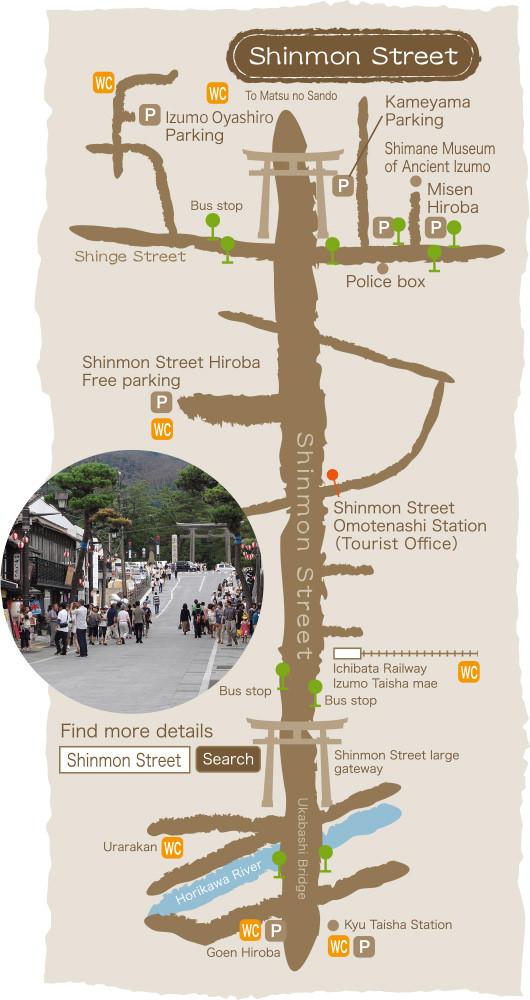
A National Treasure and symbol of Matsue 11National Treasures Matsue Castle
Matsue Castle is a solemn and imposing hilltop fortress that dominates the city center of Matsue. Originally completed in 1611, during the early Edo period (1603–1867), it is often called “Plover Castle” (Chidori-jo) because its large gables suggest birds in flight. It is one of only 12 Japanese castles that has survived with its basic wooden structure intact. Like most Japanese castles, it was gradually expanded and modified over the years in response to changing defensive and political needs, but its central tower keep (tenshu) has remained essentially the same since the 1740s.
Generations of Family Rule
Construction began under Horio Yoshiharu (1542–1611), the local lord and founder of Matsue. The castle was passed down to Kyogoku Tadataka (1593–1637), and when he died without an heir, it was inherited by Matsudaira Naomasa (1601–1666), grandson of the first Tokugawa shogun, Ieyasu (1543–1616). Naomasa became the first daimyo of the Matsue domain, ushering in a long period of cultural and economic prosperity in Matsue, and the Matsudaira family remained in possession of Matsue Castle for 10 generations over 234 years, until the domain system was abolished in 1871 following the Meiji Restoration. Most Japanese castles were destroyed following an order from the new government in 1873, but thanks to fundraising and vocal support from the public and local leaders, the central tower keep of Matsue Castle was preserved. The castle underwent a thorough restoration in the 1950s, and was declared a National Treasure in 2015.
An Ideal Defensive Site
The location of Matsue Castle offered protection against attack—from land or from Lake Shinji—and access to many nearby waterways for transport. A system of moats was dug, most of which still exists, and the excavated earth was used to fill in the marshy ground on the west side of the castle. The Ohashi River functioned as an additional natural defense. Japanese castles are typically divided into successive defensive wards, and at Matsue there are three, with the tower keep (honmaru) occupying the highest and most secure location. The second ward (ninomaru) was divided into an upper section where the lord’s main residence and buildings for official business were located, and a lower one, which housed barracks. The lowermost ward (sannomaru) also contained official residences. All of these structures were dismantled during the Meiji era (1868–1912). A shrine was erected in the upper level of the second ward in 1899, and a large Western-style guesthouse was added in 1903. Shimane Prefectural Government offices currently stand on the site of the third ward.
Although the castle’s massive stone walls (ishigaki) remain almost fully intact, numerous gates and other structures were removed in the 1870s. Several gates were reconstructed in 1960 and 1994, and three white-plastered fireproof lookouts called yagura were reconstructed atop the stone walls in 2001.
Innovative Design Features
The well-preserved tower keep is the castle’s primary attraction. Seen from the exterior, the tower appears to have four stories atop its high sloping stone base, diminishing in size as they rise. The tower is sheathed in black-painted wooden boards, with white fireproof plaster accents. Successive roofs and gables articulate the exterior and shelter the interior spaces. The roof of the uppermost story is crowned by prominent ridge decorations in the form of mythical sea creatures called shachi-hoko, which are made of copper-covered wood. The main entrance is sheltered within a secure roofed structure that looks like a miniature castle.
Despite the exterior appearance, the tower has five floors, plus a basement level. A number of the unusual features of the tower are innovations developed in response to issues faced by the builders. At the time Matsue Castle was built, in the first decades of the seventeenth century, the building of castles all over Japan had contributed to widespread deforestation. Because it was difficult to obtain the large timbers preferred for the structural pillars used in this type of construction, the castle’s designers utilized clusters of smaller timbers bound together by iron clamps and straps. The 130 pillars of this type are clearly visible.
Additional structural stability was achieved by placing the pillars in sets that extended through two floors, rather than supporting just one. These sets of “through pillars” were staggered vertically to form a strong interlocked structure. In other instances, short pillars were ingeniously supported by horizontal beams that distributed the structural load and made longer pillars unnecessary. Other innovations included the use of removable interior stairways made of lightweight paulownia wood (kiri) that could be easily pulled up to prevent attackers from ascending to the upper floors. The basement level was used for storage, and a well was dug to provide a reliable water supply if the castle came under siege. This is the only known example of a well located inside a Japanese castle tower.
Panorama of the Lords’ Domain
Visitors to Matsue Castle today will find informative multilingual historical displays as well as explanations of the castle’s design features on each floor. The uppermost story, which served as a lookout, has wide windows on all sides with panoramic vistas of Lake Shinji, the nearby mountains, and the city below—the same perspective shared over the centuries by the lords of the Matsudaira domain.
This English-language text was created by the Japan Tourism Agency.
O[April-September] 8:30am-6:30pm [October-March] 8:30am-5pm
COpen 7 days a week
PMatsue Castle Otemae Parking
TEL0852-21-4030
400 years of History in Matsue Matsue History Museum
Materials, films and models portray the anatomy of the castle town as well as its history and culture. Visitors can enjoy green tea and Japanese confectioneries at a cafe. The museum serves as a good starting point to tour around the castle city. A must-visit to get to know the castle.
O[April-September] 8:30am-6:30pm [October-March] 8:30am-5pm
CEvery Month third Thursday (If holiday, close the following day)
PMatsue Castle Otemae Parking
TEL0852-32-1607
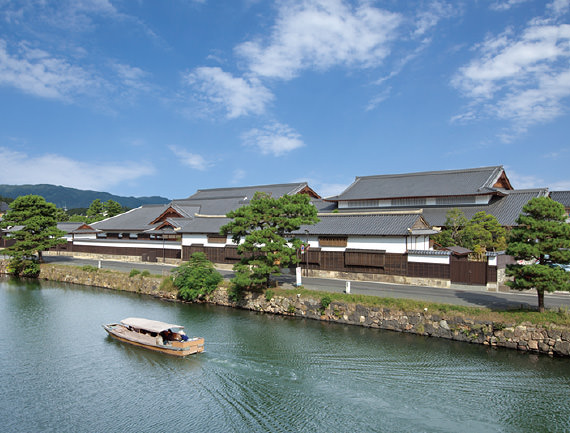
A boat cruise to feel the seasons Horikawa Sightseeing Boat Pier
A moat surrounding the castle still remains as it was when the castle was built. "Horikawa Meguri" boat cruising offers visitors a chance to enjoy various spots including an authentic city view and areas associated with Yakumo Koizumi.
A507-1, Kuroda-cho, Matsue-City
O9am-5pm (Closing time varies depending on season)
COpen 7 days a week. Operation depends on weather
PAvailable
TEL0852-27-0417
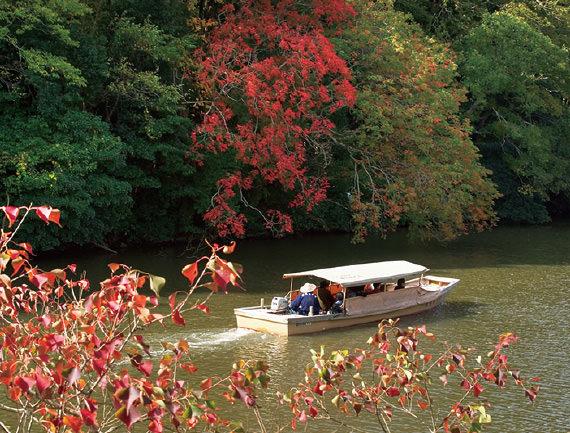
Escape to a harmonious world of Japanese paintings and gardens. 26Adachi Museum of Art
The museum stores 1500 works of art, ranging from modern Japanese paintings by the great painter Yokoyama Taikan to pottery by Yasugi's own Kawai Kanjiro and Kitaoji Rosanjin, a well known chef and potter. The museum also houses lacquer works and more. Its 40 acre Japanese garden has been ranked "Best Garden" in the US Journal "The Journal of Japanese Gardening" for 15 consecutive years.
A320, Furukawa-cho, Yasugi-City
O[April-September] 9am-5:30pm [October-March] 9am-5pm
COpen 7 days a week (Annex closes occasionally)
PAvailable (Including motor-coach)
TEL0854-28-7111
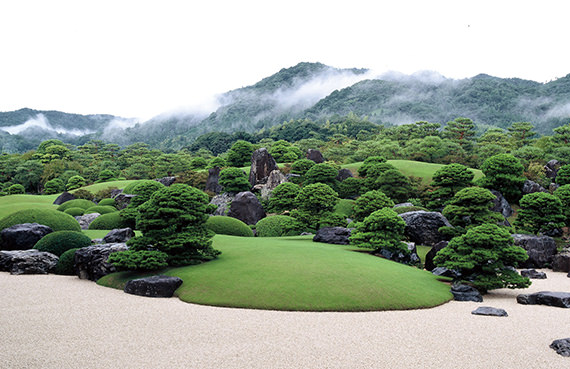
Tea ceremony room "Juraku-An"
Enjoy green tea of the highest quality as you take in the view of the twin "Living Hanging Scrolls".
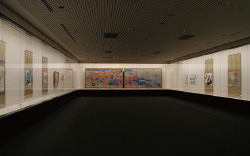 "Yokoyama Taikan Special Exhibition Room"
"Yokoyama Taikan Special Exhibition Room"
Master of modern Japanese painting Yokoyama Taikan's 150 works of his early to later years is collected in Adachi Museum of Art. His works will be reselected 4 times a year in season to display in exhibition room throughout the year.
※Unauthorized copying prohibited.
San'in's major hot spring in the sea 36Kaike Onsen
Kaike Onsen is a natural hot-spring resort that occupies a beautiful stretch of beach-lined seafront about 15 minutes by car from central Yonago. Though a fishing village had existed here for a long time, the hot spring was only discovered in 1900, when a local fisherman noticed bubbles emerging from the sandy beach. Today, there are about 20 inns and resort hotels in Kaike; they range from the affordable to the luxurious, offering both overnight and day-visit access to their baths and beaches. This is one of the few resorts in Japan where hot-spring baths and ocean swimming can be enjoyed in the same location.
Kaike is also known as the birthplace of the triathlon in Japan. Since 1981, sport facilities for triathlon open-water swimming, cycling, and running have been established and regularly improved, attracting Japanese Olympic triathletes to train here. The Yumigahama Cycling Course that runs along the beach connects Kaike with Sakaiminato City about 16 kilometers to the west. In addition, the clear water and the unusual scallop-shaped beaches attract snorkelers; marine activities like stand-up paddleboarding and sea kayaking are also popular.
This English-language text was created by the Japan Tourism Agency.
A3-1-1, Kaikeonsen, Yonago-City
O8:30am-6pm
COpen 7 days a week
P30 cars
TEL0859-34-2888 (Kaike Onsen union)
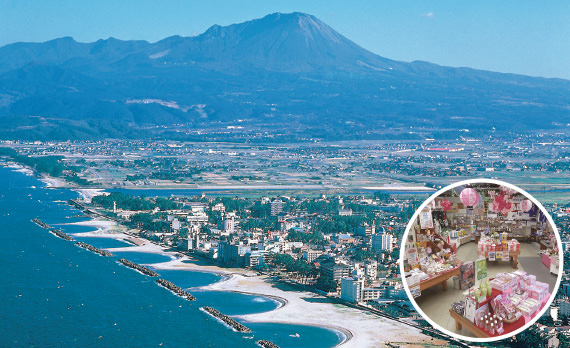
"Kaike Yokocho Kinaiya". A souvenir shop dealing in local specialties.
TEL 0859-30-3220
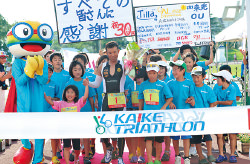 Kaike onsen is in the birthplace of Japan's triathlon and is visited by a number of ironmen in July.
Kaike onsen is in the birthplace of Japan's triathlon and is visited by a number of ironmen in July.
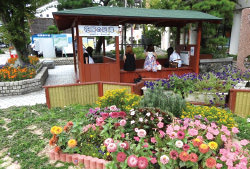 Relaxing foot bath with a breeze from the sea
Relaxing foot bath with a breeze from the sea
There are two foot bath spots in Kaike that anyone can use by free. One is "Shiokaze (=Sea breeze)" with the ocean view and the other is "Hanakaze (=Flower breeze)", a foot bath surrounded by seasonal flowers.
Shiokaze no Ashiyu Kaike Kaihinhama park
■Open 10am-9pm
Hanakaze no Ashiyu Yonago City Tourism park
■Open 9am-9pm
World of Shigeru Mizuki full of familiar yokais 46Mizuki Shigeru Road
Mizuki Shigeru Road is an 800-meter stretch of the main shopping street from Sakaiminato Station that celebrates the world-famous manga artist who was raised in this city. The street is lined with 177 bronze statues of yokai (Japanese monsters), including many of the characters made famous in Mizuki’s best-known work, GeGeGe no Kitaro, and other creatures from Japanese mythology and folklore that Mizuki also drew. It is a fine example of using public artworks to stimulate urban revival, attracting Mizuki fans and other visitors to the city.
Yokai Zones
The statues are grouped into five thematic zones: Mizuki’s Manga World, Yokai in the Forest, Yokai in the Home, Yokai Hidden in Familiar Places, and Yokai Who Control Gods and the Buddha. The bronze statues were cast in many sizes—some nearly miniature, and many of human scale. Almost all of them are quite humorous. With many guide maps available, visitors can enjoy exploring the neighborhood as they hunt for their favorites. A Yokai shrine is located on one block, accessible through an unusual shrine gateway that opens to the street. A large black granite-and-wood object stands in the center, and a tall stone water basin with an eerie motif stands to one side. Wooden ema talismans inscribed with wishes cover one wall. Spirit fortune-telling slips (yokai omikuji) are available, as is a yokai postal delivery service. A street-corner plaza not far away is the site of the Kappa Fountain, in which nine yokai lounge around while Kitaro strikes a pose modeled on the “Manneken Pis” (Brussels’ famous landmark statue of a young boy urinating). Mizuki Shigeru appears on another corner, accompanied by his wife Nunoe; he is shown elsewhere at his drawing table, along with his characters Medamaoyaji, Nezumiotoko, and Kitaro.
Yokai Shopping
The entire Mizuki Shigeru road is lined with an amazing array of yokai-themed establishments, from bakeries to ramen shops, ATMs, antique stores, and, of course, souvenir shops. Virtually all have adopted a yokai theme, and the variety of humorous adaptations is endlessly amusing. The Mizuki Shigeru Museum, one of the city’s main attractions, is near the end of the road opposite the railway station. The road underwent extensive renewal at the time of its 20th anniversary in 2018, and the entire route is now illuminated at night, with over 50 computer-controlled projectors casting shadow figures of the familiar characters onto the street and sidewalks.
This English-language text was created by the Japan Tourism Agency.
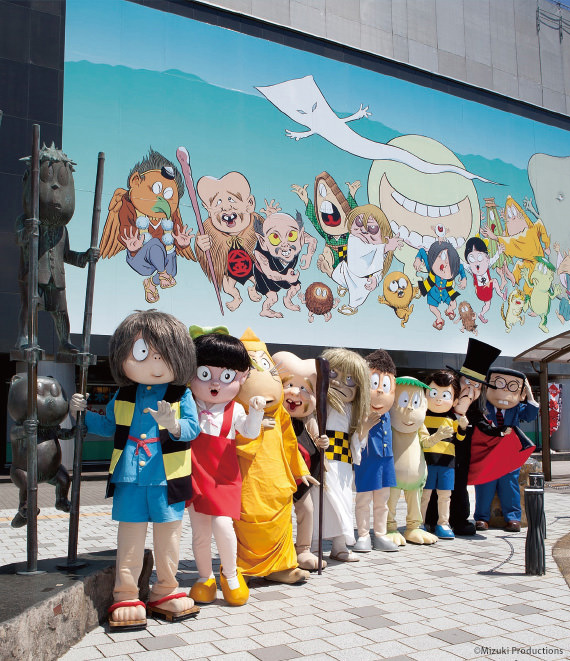
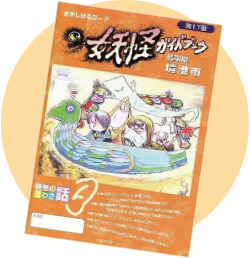 You can get a certificate of completion if you collect all the yokai stamps!
You can get a certificate of completion if you collect all the yokai stamps!
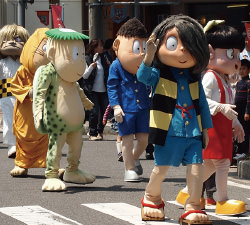 Yokai parade by Kitaro and his friends takes place semimonthly.
Yokai parade by Kitaro and his friends takes place semimonthly.

